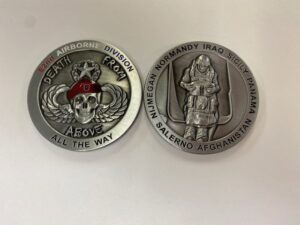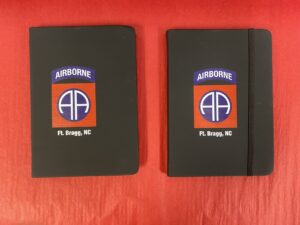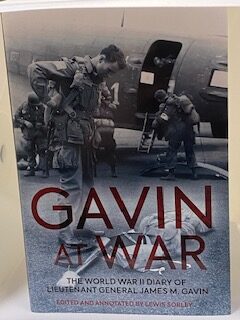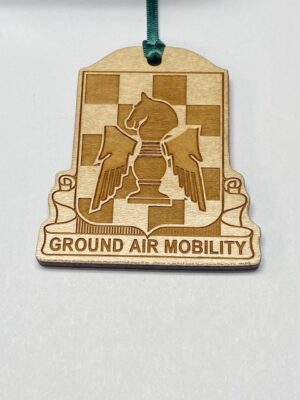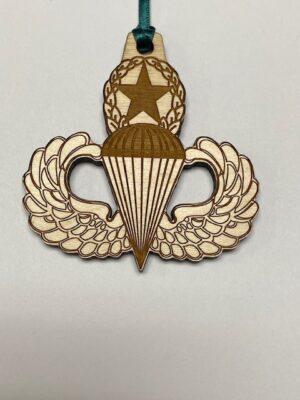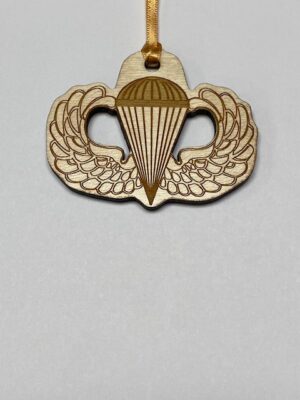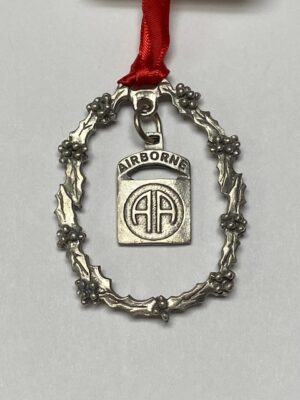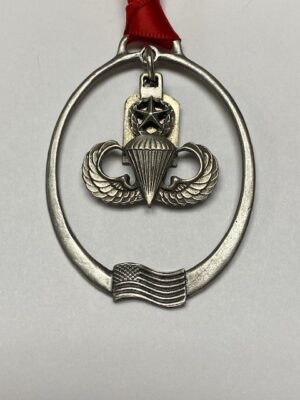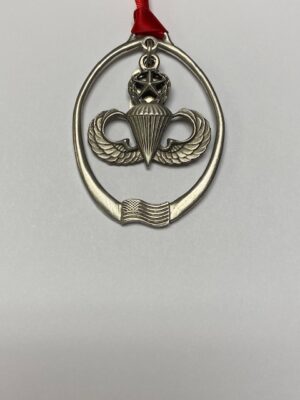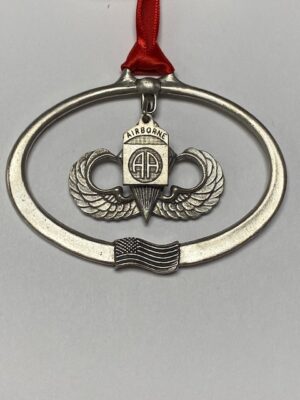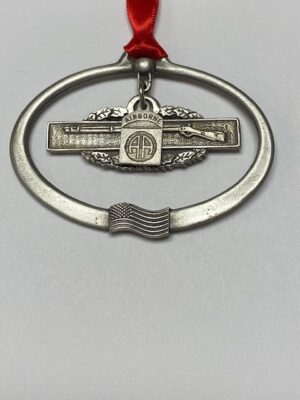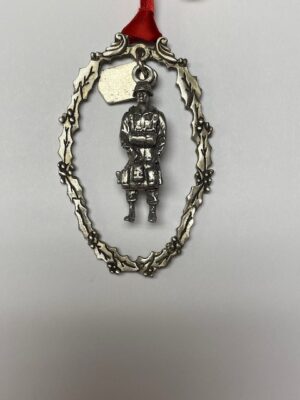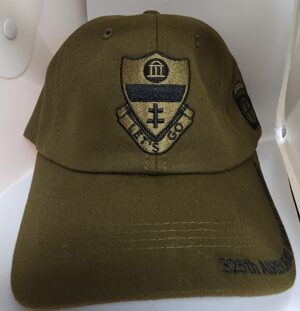General Information
The 82d Airborne Division: Today
The 82d Airborne Division is an active-duty, modular airborne infantry division of the United States Army. The Division is stationed at Fort Bragg, North Carolina, one of the largest military training areas in the world. The 82d trains for airborne assault operations into enemy-denied areas, with a specialization in airfield seizure. Currently under the command of the XVIII Airborne Corps, the 82d is the nation’s Global Response Force. Once ordered, it can mobilize, load, and land anywhere in the world in less than 36 hours to perform combat operations, assist U.S. allies, and provide humanitarian assistance.
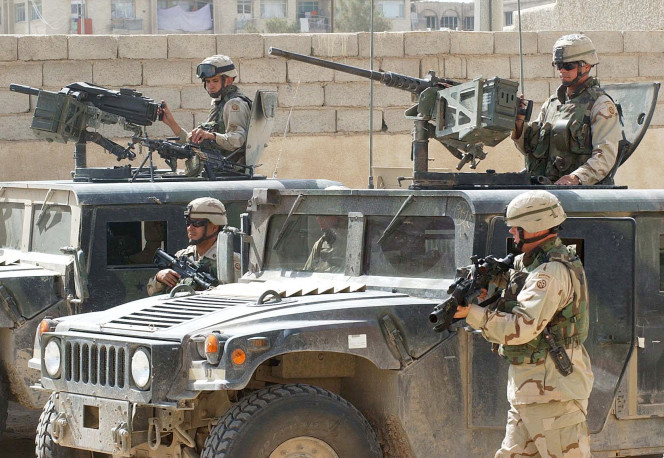
82d In Afghanistan
The 82d Airborne Division: History
The 82d Division was constituted in the National Army on 5 August 1917 to support the United States’ entry into World War I. It was organized 25 August 1917 at Camp Gordon, near Atlanta, Georgia. Camp Gordon no longer exists, but a plaque commemorating the 82d Division and Camp Gordon is located on site at Peachtree Executive Airport. During World War I, many U.S. divisions decided upon a nick-name to help build esprit-de-corps and a bond among men. The 82d Division was no different.
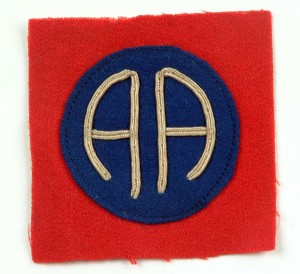
Hand made WWI Patch
The Commanding General, Brigadier General W. P. Burnham, held a contest in conjunction with the men of the Division, the citizens of Atlanta, and the Atlanta Georgian Newspaper. Thousands of suggestions poured into the newspaper, and it was up to the Governor Hugh Dorsey, BG Burnham, and Major R.E. Beebe to sift through them all and decide which entry would earn the honor of naming one of Uncle Sam’s fighting divisions.
The Division held a very diverse group of men training to become a fighting unit. Many were immigrants who spoke little to no English. But one fact arose, and Mrs. Vivienne Goodwyn saw it immediately. There were men from each of the 48 states in the 82d Division, which was unique for the time. Most divisions being organized for the war encompassed men from three to five states. Mrs. Vivienne, as she became known, submitted the winning selection, ‘The All American’ Division. The original Division shoulder sleeve patch of a red square with a blue circle in the middle would soon have Troopers sewing a double AA in the blue.
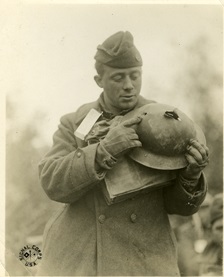
326th in the Meuse Offensive
The 82d was one of the first seven U.S. divisions to arrive in England, and fight in France. The Division participated in the Battle of Lorraine 1918, and the campaigns of St. Mihiel and Meuse-Argonne 1918. The first All American killed in combat was Captain Jewett Williams, 326th Infantry, on the night of 9 June 1918. Two All Americans, LTC Emory J. Pike and Corporal Alvin C. York would receive the Medal of Honor for their actions in combat. General John J. Pershing called Corporal York one the greatest Soldiers of the war.
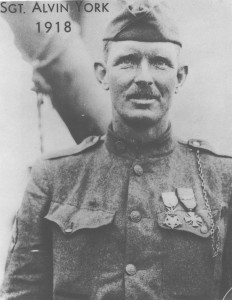
CPL Alvin C. York 1918
The 82d demobilized on 27 May 1919 at Camp Mills, New York, after returning home from World War I. It was reconstituted into the Organized Reserves as Headquarters, 82d Division, on 24 June 1921 and housed at the Federal Building in Columbia, South Carolina.
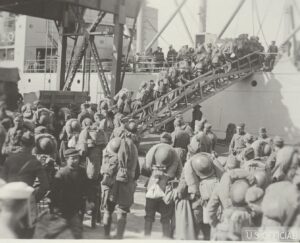
82d Division Returns Home From WWI
Following the Japanese attack on Pearl Harbor, the Division was re-designated on 13 February 1942 as Division Headquarters, 82d Division. It was ordered into active service on 25 March 1942 at Camp Claiborne, Louisiana, under the command of General Omar Bradley. Sergeant Alvin C. York addressed the men and inspired them to continue their history and service from World War I. General Bradley began a strict and physical training regimen, which was carried on by the next commander, Major General Matthew Bunker Rigdway.
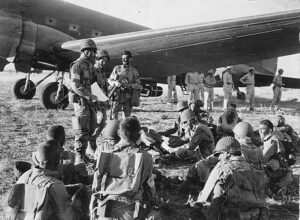
In North Africa Preparing For Sicily Assault
On 15 August 1942, the Division was reorganized and designated the 82d Airborne Division. The U.S. Army adopted and developed the airborne concept, and the 82d would be the first U.S. division to receive this designation. MG Ridgway would lead the Division to North Africa in May 1943, where it intensely trained for the airborne assault onto the island of Sicily for Operation HUSKY.
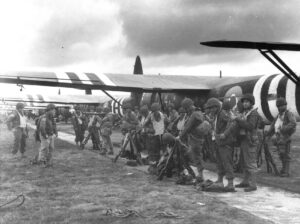
325th Final Equipment Checks Normandy
In September 1943, General Mark Clark, Fifth Army, requested MG Ridgway send the 82d to drop onto the Salerno beachhead to help secure the Italian foothold established by the Allies. Operation AVALANCHE consisting of two, consecutive night jumps accomplished the mission and eliminated any doubt the Allies would be pushed back into the sea. Operation SHINGLE, a seaborne assault by the 504th Parachute Infantry Regiment, gave the Allies a further foothold on the Italian peninsula.
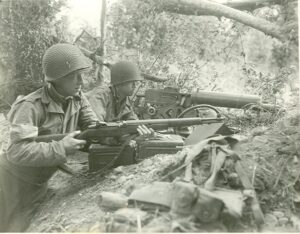
82d in Normandy
While the 504th stayed in Italy to fight, the rest of the 82d headed for England to prepare and train for Operation NEPTUNE, the airborne assault of Operation OVERLORD, the Allied offensive into Normandy, France. Joined by the 507th and the 508th Parachute Infantry Regiments, the 82d assaulted Normandy with 12,000 Parachute and Glider troops, 6 June 1944. Their mission was to destroy vital Germany supply bridges and capture causeways leading inland across the flooded areas behind the Normandy beaches where seaborne forces would land to gain control of roads and communications. The 82d fought for 33 days without relief or replacements, and once again successfully completed the mission.
Last Minute Brief before loading C-47s Op MG
The final airborne assault for the 82d Airborne Division during World War II was into Holland in September 1944. Operation MARKET GARDEN would have the All Americans perform a day time jump into Nijmegen. Led by their new commander, BG James M. Gavin, the 82d’s objectives were to capture and hold the key bridges at Grave and Nijmegen, as well as some subsidiary bridges over a canal to the east of Grave.
The 82d successfully dropped and assembled at the Maas River Bridge at Grave and secured the structure within an hour. Gavin led his men in fighting and secured the approach to the bridge at Nijmegen, the second longest span in Holland and heavily fortified by the enemy. On the next day, 200 men of the 82d performed a daytime crossing of the fast moving Waal River in an attempt to secure the opposite end of the Nijmegen Bridge. German resistance was fierce, but the All Americans pushed through, secured the bridge, and opened a route to the Rhine River and into Germany.
The All Americans briefly rested after Holland, but the final German offensive in December 1944, the Battle of the Bulge, ended any reprieve. After being rushed into combat with little food, ammunition, and winter clothing, the 82d held their ground against German tanks and artillery, began to push back, and by February 1945 were pushing into Germany. During the drive to end the war, the Division liberated a work camp at Wobbelin, Germany. The 82d also received the unconditional surrender of 146,000 men of the 21st German Army at Ludwigstlust.
World War II ended in May 1945, and the 82d Airborne Division would receive the honor of Occupation Duty in Berlin. It is in Berlin where the Division received its second, and most famous nickname, “America’s Guard of Honor” from General George S. Patton, after he reviewed the Paratroopers. Four men would receive the Medal of Honor for their actions during the war, Private First Class Charles N. DeGlopper, Private Joe Gandara, Private John R. Towle, and First Sergeant Leonard A. Funk.
Following World War II and into the early 1960s, the 82d Airborne Division trained hard during the Cold War to become the nation’s Strategic Reaction Force. They participated in numerous and varied exercises containing up to 60,000 men, within the U.S., and trained in Greenland, Alaska, South America, Turkey and Africa. The might and mettle of the 82d was tested time and time again.
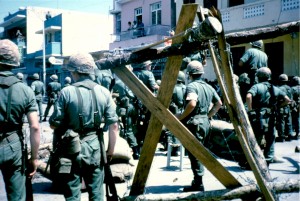
1-505 Main Checkpoint, Dom Rep
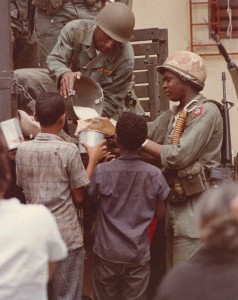
Feeding Civilians, Dom Rep 1965
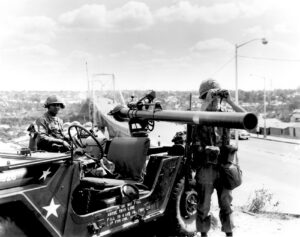
82d Secures Duarte Bridge, Dom Rep 1965
In April 1965, twenty years after World War II, with communism attempting to emerge in the Western Hemisphere, the 82d Airborne Division deployed to support Operation POWER PACK in the Dominican Republic. The Paratroopers arrived and suppressed the communist rebellion, allowing democratic elections to proceed. Most of the Division returned home by the September 1965, but 1st Brigade stayed until September 1966.
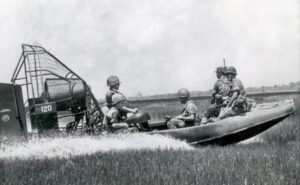
Patrolling in South Vietnam
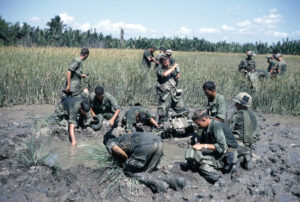
3d Brigade Vietnam 1968
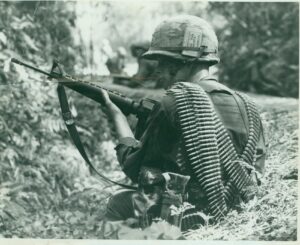
SP4 William Burke, Vietnam
In response the Tet Offensive of 1968, in the Republic of Vietnam, General Westmoreland, MACV commander, requested a brigade of the 82d Airborne Division be sent immediately to support U.S. operations. Within 24 hours, the Division organized men and equipment of the 3d Brigade, known as the Golden Brigade, and had them in route to Chu Lai. The 3d Brigade performed combat duties in the Hue-Phu Bai area of the I Corps sector. The brigade moved south to defend Saigon, fighting battles in the Delta, the Iron Triangle, and along the Cambodian border. After serving 22 months in Vietnam, 3d Brigade troopers returned to Fort Bragg in December 1969. Sergeant First Class Felix M. Conde-Falcon received the Medal of Honor for destroying five enemy bunkers at an enemy battalion command outpost.
On 25 October 1983, the 82d was called back to the Caribbean, this time to the tiny island of Grenada to assist the nation’s democratic government to defeat a communist uprising. The first 82d unit to deploy in Operation URGENT FURY was a task force of the 2-325th Infantry. The troops were rigged for an airborne insertion, but two hours out of Pope Air Force Base, they air landed since the airfield was already secured. Operation URGENT FURY tested the division’s ability to deploy as a rapid deployment force. The first aircraft carrying division troopers touched down at Grenada’s Point Salines 17 hours after notification. The 82d was once again successful in defending democracy and American interests.
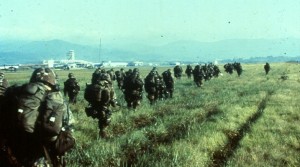
Securing Perimeter at Airport Panama
On December 20, 1989, the All Americans conducted their first combat jump since World War II onto Torrijos International Airport, Panama, to oust ruthless dictator, Manuel Noriega, and restore the duly elected government to power. The 1st Brigade comprising the 1st and 2nd Battalion, 504th Infantry along with the 4-325th Infantry, joined the 3-504th Infantry already prepositioned in Panama. After the night combat jump and seizure of the international airport, the 82d conducted follow on combat air assault missions in Panama City and in the surrounding areas, eventually dismantling the Noriega regime. The victorious paratroopers returned to Fort Bragg on January 12, 1990, in style, conducting a mass jump onto Sicily Drop Zone, Fort Bragg.
With the 82d celebrating and congratulations still fresh in the minds of most paratroopers, the 82d Airborne Division was called upon once again to perform a rapid deployment mission. This time it was to draw a line in the sand.
Six days after Iraq’s invasion of Kuwait on 2 August 1990, the 82d became the vanguard of the largest deployment of American troops since Vietnam. The first unit to deploy to Saudi Arabia on 8 August was a task force of the 2d Brigade. Soon after, the rest of the division followed. Their intense training began in anticipation of paratroopers fighting it out in the desert with the heavily armored Iraqi army.
Their training concentrated on chemical defense, anti-armor tactics and live-fire maneuver exercises. The battle cry picked up by the paratroopers was “The road home … is through Baghdad.” On 16 January 1991, Operation DESERT STORM began when an armada of Allied war planes pounded Iraqi targets. The ground war began six weeks later on 23 February, with the 82d conducted flanking movements deep inside Iraq. In the short 100 hour ground war, the vehicle-mounted 82d drove deep into Iraq capturing thousands of Iraqi soldiers and tons of equipment, weapons, and ammunition. After the liberation of Kuwait, the 82d began deployment back to Fort Bragg, with most of division returning by the end of April 1991.
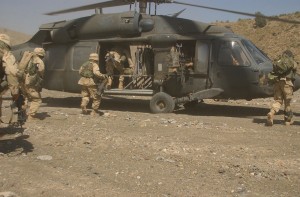
Aviation Assets in Afghanistan 2005
When America was attacked on September 11, 2001, President George W. Bush called upon the American military to fight global terrorism. In June 2002, Task Force Panther, comprised of elements from the 505th Infantry and other 82d units, deployed to Afghanistan in support of Operation ENDURING FREEDOM (OEF). Task Force Devil, comprised of the 504th Infantry and support elements replaced Task Force Panther in January 2003.
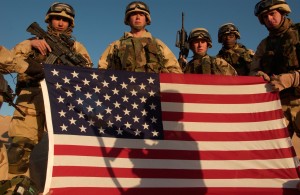
OIF 2005
In February 2003, 2d Brigade, deployed with the Division Headquarters to Kuwait in support of Operation IRAQI FREEDOM (OIF). The Division conducted sustained combat operations throughout Iraq. The Division Headquarters returned to Fort Bragg, May 2003. The 2d Brigade remained in Iraq attached to the 1st Armored Division and continued to conduct combat missions. The Division Headquarters along with 3d Brigade and elements of Division Artillery, Division Support Command, and Aviation, returned to Iraq in August 2003 to continue command and control over combat operations in and around Baghdad.
The 1st Brigade deployed to conduct combat operations in OIF, January 2004. The 2d Brigade redeployed to Fort Bragg, North Carolina in February. The Division Headquarters was relieved by the 1st Marine Expeditionary Division in March 2004, and the remaining 82d forces in Iraq redeployed to Fort Bragg by the end of April 2004. For the first time in two years all of the Division’s units were home.
In September 2004, the 82d’s Deployment Ready Force, 1-505 deployed in support of OEF6, supporting Joint Task Force -76 and the Afghanistan elections. The TF redeployed in October 2004.
In December 2004, the 82d’s 1-17th Cavalry, the 2d and 3d Battalions of the 325th Infantry deployed to Iraq to provide a safe and secure environment for the country’s first-ever, free national elections. Thanks in part to the efforts of 2d Brigade paratroopers, more than eight million Iraqis were able to cast their first meaningful ballots. In September 2005, Task Force 2-325 and Task Force 3-504 deployed to Iraq in support of the Iraqi national elections once again. The units redeployed in December 2005 and January 2006 respectively.
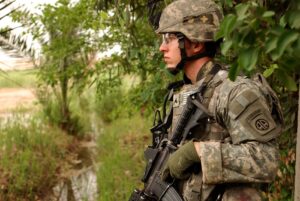
Securing Perimeter Iraq 2009
More than 3,600 Paratroopers from the 82d, conducted a no-notice deployment in support of Joint Task Force Katrina for Operation All American Assist on Sept. 3, 2005. While supporting relief efforts in the wake of Hurricane Katrina, the Task Force led daily search-and-rescue operations in high water areas, resulting in more than 900 people and countless pets rescued. Additionally, they evacuated almost 5,000 residents from throughout New Orleans and the surrounding area.
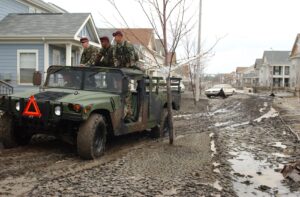
Hurricane Katrina -Operation AA Assist
In June 2006, the Division was reorganized into a modular division structure. The Division’s major subordinate units now include the 1st Brigade Combat Team, the 2d Brigade Combat Team, the 3d Brigade Combat Team, the 4th Brigade Combat Team, the 82d Combat Aviation Brigade; and the Headquarter and Headquarters Battalion.
The 2d Brigade Combat Team deployed to OIF, January 2007, as the lead brigade of General Petraeus’s Surge Strategy to reclaim Baghdad from insurgents. 1st Brigade Combat Team deployed to Iraq to provide theater security throughout the country.
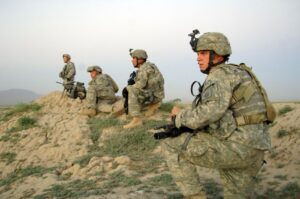
On Patrol in Afghanistan 2008
The Division Headquarters and Division Special Troops Battalion (TF Gladius) and other Division elements deployed to Afghanistan in early 2007 for a 15-month assignment as Combined Joint Task Force 82 (CJTF-82) and the U.S. troop contribution to NATO’s International Security Assistance Force (ISAF). During Operation ENDURING FREEDOM VIII, CJTF-82, commanded by MG David M. Rodriguez, served as the National Command Element for over 27,000 U.S. Soldiers, Sailors, Airmen, Marines, and civilians in Afghanistan.
In 2009 2d Brigade Combat Team assumed the role as the ground component of the Global Response Force for the Department of Defense and in 2010 deployed to Haiti in support of humanitarian relief following a devastating earthquake.
Also in 2009, 3d Brigade Combat Team deployed to Iraq on a 15-month rotation. The 82d Airborne Division received orders from Forces Command on 2 March 2009 to prepare, once again, for deployment in support of Operation ENDURING FREEDOM. They departed May 2009 for Regional Command – East (RC-E), Afghanistan, and accepted the transition of authority from the 101st Airborne Division (Air Assault) on 3 June 2009. The 4th Brigade Combat Team of the division, along with 700 additional training and support personnel, arrived in country, August 2009, and took up positions in RC – West and South. CJTF-82’s mission was to support the Government of the Islamic Republic of Afghanistan (GIRoA) in rebuilding the region’s security forces, social institutions, including governance, economics, and infrastructure, while neutralizing an insurgency hindering regional stability. This would prove to be no easy task, as RC-East’s operational area was 124,675 square kilometers that included 14 provinces, as well as securing 570 miles of Afghanistan-Pakistan border.
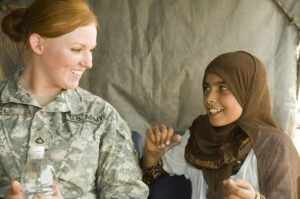
82d FE Teams, Afghanistan 2012
In May 2011, 2d Brigade Combat Team deployed to Iraq in support of Operation NEW DAWN. The 2d BCT was the last brigade combat team to pull out of Iraq and successfully relinquished responsibility of the Anbar Province to the Iraqi government. They returned home to Fort Bragg, December 2011.
The Division returned from another year long deployment to Afghanistan in October 2012. They served as the Regional Command South headquarters with nearly 10,000 Paratroopers throughout Afghanistan, from Kandahar in the south to Afghanistan’s eastern border. When history looks back on Afghanistan in 2012 there will be one undeniable fact – the All American Paratrooper was once again on the ground, working shoulder to shoulder with those in a time of need.
Today, as they have in recent deployments and throughout the Division’s history, the troopers who wear the red, white and blue patch of the 82d Airborne Division are truly America’s Guard of Honor.
Disclaimer: The 82d Airborne Division Historical Society is not endorsed by DOD. “This is a non-federal entity. It is not a part of the department of defense or any of its components and has no governmental status.”



